With its vast wilderness and rugged terrain, bear hunting Montana has long been renowned as a premier destination for bear hunting enthusiasts. This adrenaline-fueled activity has gained immense popularity among hunters from all walks of life.
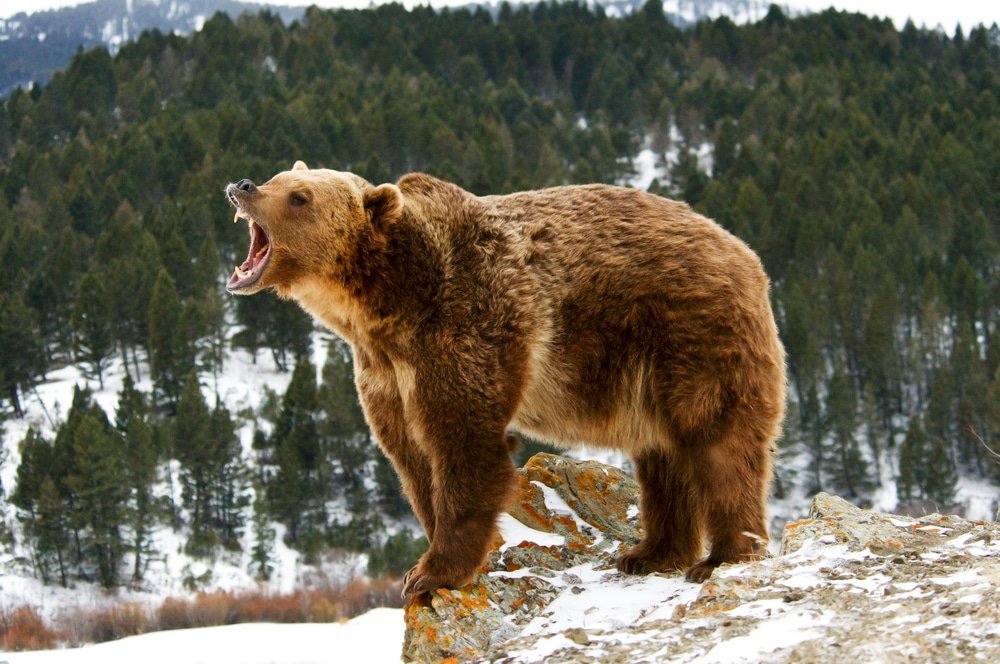
The state offers a unique and thrilling bear hunting experience with its diverse population and challenging landscapes.
The significance of bear hunting in Montana goes beyond mere recreation. Managing the state’s bear populations is crucial to ensure a healthy balance between wildlife conservation and human safety.
Moreover, bear hunting boosts local communities economically through tourism and the sale of licenses and permits. This financial support aids conservation efforts, research initiatives, and habitat preservation programs.
Bear Hunting Montana Hunting Traditions
Bear hunting tradition runs deep in the veins of Montanans, dating back to ancient times when indigenous tribes relied on bears for sustenance and spiritual connection to the land. These tribes skillfully tracked bears through dense forests using their intimate knowledge of nature.
As European settlers arrived in Montana during the 19th century, they brought their bear hunting practices inherited from generations ago. Over time, these traditions merged with Native American techniques to form a unique blend of skills adapted to Montana’s rugged environment.
Today, modern-day hunters carry on this rich legacy by embracing old wisdom while incorporating new tools and techniques. They pay homage to those who came before them while forging ahead into uncharted territories that promise memorable encounters with majestic bears roaming freely amidst breathtaking landscapes.
Understanding Montana’s Bear Population
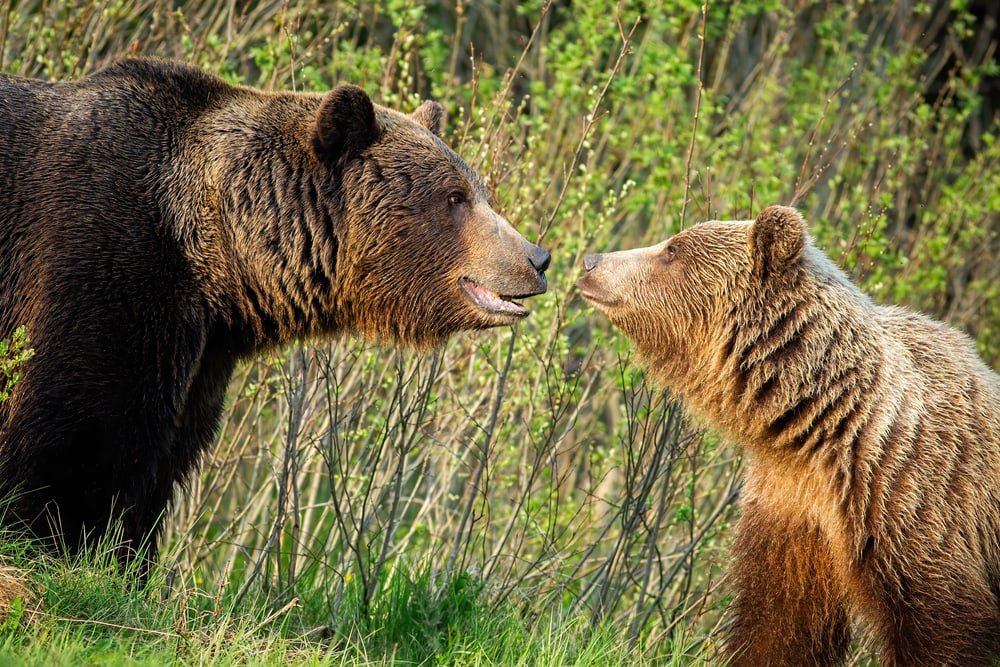
The Bear Species of Montana: Black Bears and Grizzly Bears
Regarding the diverse bear population in Montana, two main species reign supreme: black bears (Ursus americanus) and grizzly bears (Ursus arctos horribilis). While both majestic creatures share certain characteristics, they have distinctive features that set them apart.
Black bears are known for being smaller than grizzlies, weighing between 150 to 600 pounds on average. They showcase various coat colors, including black, brown, cinnamon, and even blonde variations.
Grizzly bears, on the other hand, are larger and can weigh anywhere from 200 to 800 pounds or more. Their iconic shoulder hump and distinctively long claws make them easily recognizable.
Distribution and Habitat Preferences of Bears in Montana
Montana offers a diverse landscape that is a perfect haven for black bears and grizzlies. Black bears can be found throughout the state’s forests but are particularly abundant in western Montana, where dense vegetation provides ample cover for their daily activities.
They exhibit adaptability regarding their habitat preferences by inhabiting coniferous forests and mixed hardwood areas. Grizzly bears tend to concentrate more in northwestern Montana near Glacier National Park but also roam across regions like the Northern Continental Divide Ecosystem (NCDE), Yellowstone National Park area, Cabinet-Yaak area, and Selkirk-Priest Wilderness.
These magnificent creatures have specific habitat requirements influenced primarily by food availability and access to suitable denning sites. Both species favor forested areas with abundant berries (such as huckleberries) during summer when they indulge in foraging activities.
Additionally, riparian zones along rivers provide an excellent source of fish for grizzlies. During the colder months, bears seek out suitable dens to survive hibernation, often selecting areas with ample cover and protection, such as rocky slopes or thick vegetation.
Factors Influencing Bear Population Dynamics and Growth
The bear population dynamics in Montana are influenced by various factors that impact their survival and reproduction rates. Food availability plays a crucial role in determining the well-being of bear populations. Years of abundant natural food sources like berries contribute to healthier individuals and higher reproductive rates.
Conversely, limited food availability may increase competition and even alter denning behaviors. Human activities also have a significant impact on bear populations.
Habitat fragmentation due to urbanization, road development, and logging can restrict bears’ movement patterns and resource access. This encroachment can lead to human-bear conflicts as bears search for alternative food sources in human-populated areas.
Furthermore, hunting regulations are vital in managing bear populations by controlling harvest rates through quotas and seasons. Conservation efforts focus on balancing sustainable hunting opportunities with ensuring the long-term conservation of bear populations.
Understanding the intricacies of Montana’s bear population dynamics provides valuable insights into their ecology, behavior, and conservation needs. By appreciating these aspects, hunters can engage responsibly in this ancient tradition while contributing to preserving these remarkable species for generations to come.
Regulations and Licensing for Bear Hunting
Overview of Montana’s bear hunting seasons and quotas
Montana boasts a robust bear hunting season that allows hunters ample opportunities to pursue these magnificent creatures. The state has distinct seasons designated for both black bears and grizzly bears.
For black bear hunting, the season typically spans from spring to fall, with some variations in specific dates across different regions. It’s crucial to watch the Montana Fish, Wildlife & Parks (FWP) website or consult local guides for accurate information regarding opening and closing dates in your preferred hunting area.
On the other hand, grizzly bear hunting is strictly regulated due to its protected status. The FWP ensures that only licensed hunters with the appropriate tags can participate in grizzly hunts during specific limited-entry seasons.
Explanation of different types of licenses required for bear hunting
Obtaining the right licenses is imperative to embark on a thrilling bear hunt in Montana. The state offers various license options tailored specifically for bear hunters. For residents, the general big game combination license covers black bears and grizzlies when coupled with a Black Bear License or Grizzly Bear License endorsement, respectively.
Non-residents can apply for a general non-resident combination license or a non-resident Black Bear License depending on their planned hunt. It is essential to check licensing requirements each year as they may be subject to change.
Specific regulations governing methods, equipment, and baiting techniques
Montana enforces strict regulations to ensure ethical and fair chase practices during bear hunts while prioritizing safety for hunters and wildlife. The use of bait is permitted solely for black bear hunting; however, specific guidelines regarding its usage must be followed meticulously. Hunters using baiting methods must register their bait sites with FWP at least ten days before hunting.
The distance between bait sites and occupied structures must also be at least a mile. It is essential to stay informed about any new regulations imposed by FWP to ensure compliance and contribute to the conservation efforts in Montana.
Preparing for a Successful Bear Hunt in Montana
Selecting Appropriate Gear and Equipment for a Bear Hunt
Regarding bear hunting in Montana, having the right gear can make all the difference. It’s important to choose reliable, durable, and suitable equipment for the rugged terrain you’ll encounter.
Let’s start with the most critical piece of gear – your weapon of choice. Selecting the right one is crucial, whether you prefer a firearm or a bow.
For firearms, opt for a powerful rifle chambered in .30 caliber or larger to ensure an effective shot on these large animals. Popular choices include rifles like the .300 Winchester Magnum or even heavier calibers like the .338 Winchester Magnum.
If you’re more inclined towards archery, consider getting a compound bow with sufficient draw weight (50 pounds or more) to penetrate a bear’s thick hide and deliver enough force for an ethical kill shot. Practice regularly to enhance your accuracy and hone your shooting skills.
Essential Gear Checklist (Clothing, Optics, Calls, etc.)
Now that we have discussed weaponry let’s delve into other essential gear you’ll need for a successful bear hunt in Montana—first things first – clothing. Dressing appropriately for changing weather conditions is key.
Layering is recommended, so you can adjust accordingly as temperatures fluctuate throughout the day. Start with moisture-wicking base layers to keep you dry and comfortable during strenuous hikes.
Next, add insulating layers like fleece or wool to trap warmth close to your body. Top it off with a waterproof outer shell jacket and pants to protect yourself from rain showers or wet vegetation.
Regarding optics, invest in quality binoculars with good low-light performance, as bears are often active during dawn and dusk when visibility is limited. Glassing distant areas can greatly improve your chances of spotting bears. A reliable rangefinder will help you accurately judge distances, ensuring precise shots.
Don’t forget about calls and attractants! Using predator calls like distress or mating sounds can be effective in luring bears closer.
Scent attractants, such as bear-specific scents or baiting materials, can also be useful tools for attracting bears to your hunting area. Camping and survival equipment should not be overlooked.
The rugged wilderness of Montana demands adequate preparation. Ensure you have a sturdy tent, a warm sleeping bag, and a comfortable sleeping pad for overnight stays in the field.
Pack enough food rations that are lightweight yet calorie-dense to sustain you during extended hunts. Bear-resistant containers are essential for safely storing food and keeping curious bears away from your campsite.
Don’t forget essentials like a reliable GPS device, compass, first aid kit, and emergency supplies like fire-starters and water purification tablets. With the right gear in your arsenal, you’ll be well-equipped to take on the challenges of bear hunting in Montana and increase your chances of success out in the wild!
Techniques and Strategies for Bear Hunting in Montana
Spot-and-stalk method: How to locate bears in their natural habitat
Regarding bear hunting in Montana, the spot-and-stalk method is a popular and effective approach. The first step is carefully observing the terrain, looking for areas likely to attract bears. Dense patches of berries, lush meadows, or even carcasses left behind by other animals can be hotspots for hungry bears.
As you move through the landscape, keep your eyes peeled for signs of bear activity, such as tracks, scat, or claw marks on trees. Fresh tracks are particularly promising indicators that a bear may be close by.
Understanding feeding patterns and seasonal behavior
To successfully hunt bears in Montana, it’s essential to understand their feeding patterns and behavior during different seasons. Bears are opportunistic omnivores and will eat various foods depending on availability.
In springtime, they emerge from hibernation in search of nutrient-rich vegetation like grasses and sedges. During summer and fall, berries become a primary food source as they ripen across the landscape.
In addition to food availability, understanding seasonal behavior is crucial. In spring, male bears often roam more widely in search of mates, while females focus on raising cubs near den sites.
Fall brings about hyperphagia—intense feeding as they prepare for winter hibernation. By familiarizing yourself with these patterns and habits specific to each season, you can increase your chances of encountering bears during their active periods.
Effective glassing techniques for spotting bears from a distance
Glassing refers to using binoculars or spotting scopes to scan the terrain from a distance and spot bears before making your move. This technique allows you to maintain a safe distance while observing the bear’s behavior and deciding on the best action. When glassing, focus on areas with good visibility, such as open meadows or ridgelines.
Look for movements; color contrasts against the surroundings, or even patches of fur that may indicate a bear’s presence. Patience is key—spend ample time meticulously scanning each area and be aware of changing lighting conditions that may affect visibility.
Tracking and Field Skills during a Bear Hunt
Tracking skills necessary to follow a wounded or harvested bear
Tracking a wounded or harvested bear requires honed tracking skills. Familiarize yourself with different tracks left by bears, paying attention to the size, shape, and depth of footprints. Fresh scat can also provide valuable information about the bear’s diet and recent activities.
When following a blood trail left by a wounded bear, move cautiously while looking for additional signs like broken vegetation or hair stuck on branches. Remember to stay focused and maintain your tracking skills even after making the shot—it is vital to ensure an ethical hunt.
Field dressing techniques specific to bears
Field dressing a bear efficiently is crucial to preserve the quality of its meat. Start by placing the animal on its back and making an incision from just above the sternum down towards the pubic bone. Carefully remove internal organs while avoiding puncturing them if possible.
Pay special attention to removing glands near the hind legs—these can cause off-flavors in the meat if not properly removed. Remember that field-dressing bears require stronger tools than other game animals due to their dense fur and thick hide.
Proper handling/storage of meat after a successful hunt
After successfully harvesting a bear, it’s important to handle and store its meat properly for optimal taste and safety. Ensure that all pieces are thoroughly cooled down as quickly as possible to prevent spoilage. If the ambient temperature is warm, consider using game bags or coolers filled with ice to aid in cooling.
Once cooled, properly butcher the meat, removing any excess fat and connective tissue. Package the meat in airtight bags or vacuum-sealed packages and store them in a freezer at or below zero degrees Fahrenheit.
Safety Considerations while Bear Hunting in Montana
Understanding potential dangers associated with hunting bears
While bear hunting can be an exhilarating experience, it’s essential to understand and respect the potential dangers associated with encountering these formidable creatures. Bears have keen senses and can be unpredictable if threatened or surprised.
Making noise while moving through the bear country is crucial to alert bears of your presence and reduce the chances of surprising them at close range. Additionally, carry bear spray—a powerful deterrent that can help fend off an aggressive bear if necessary.
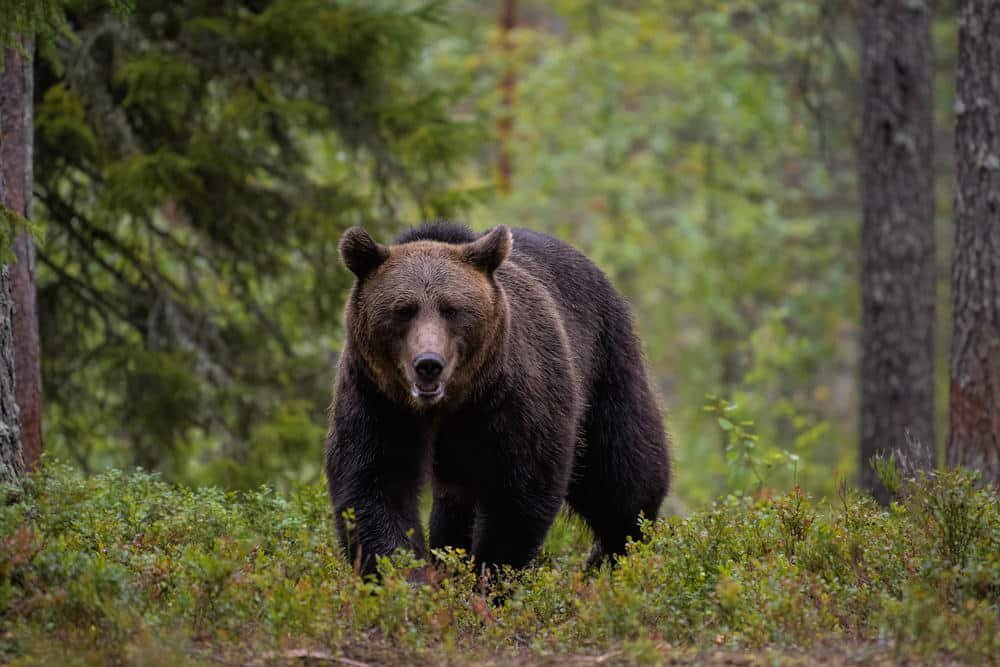
Conclusion
Bear hunting in Montana offers a thrilling adventure and a profound connection with nature’s wild side. By employing effective techniques like spot-and-stalk, glassing, tracking skills, and following proper field dressing procedures, you can enhance your chances of success while ensuring ethical practices throughout the hunt.
Remember to prioritize safety by understanding potential risks and being prepared with adequate knowledge and equipment. So gear up, embrace this challenging pursuit responsibly, and cherish the memories you’ll create amidst Montana’s breathtaking wilderness—a bond between hunter and nature.

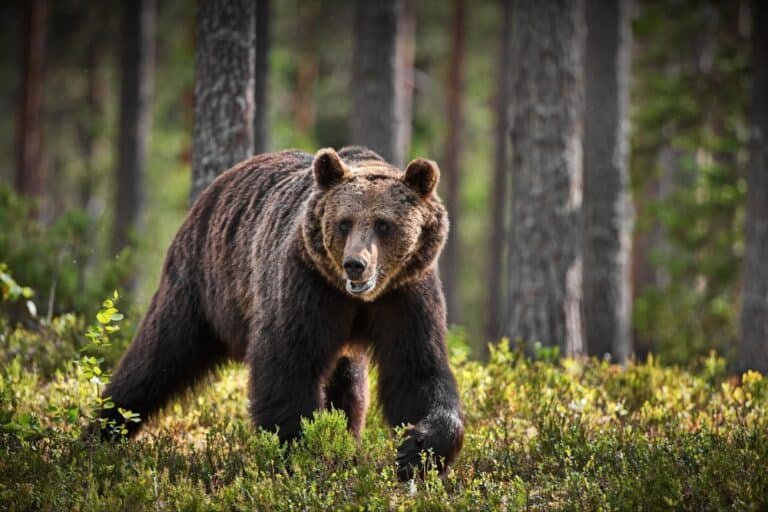
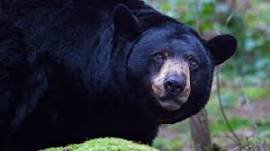
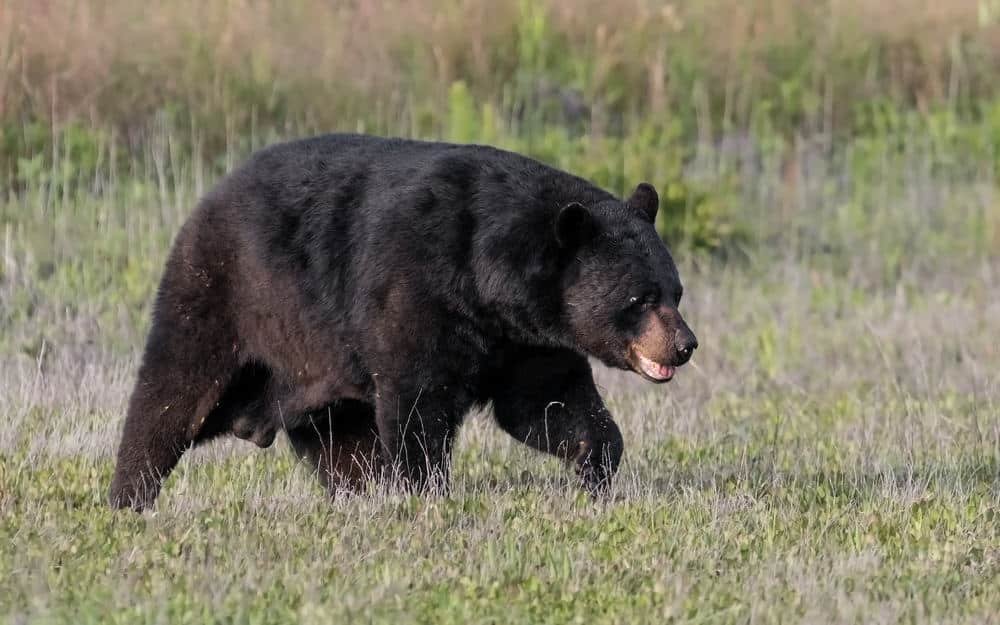
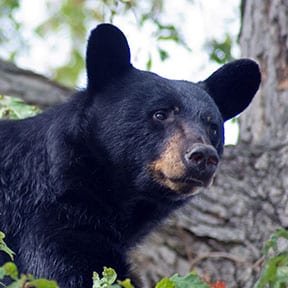
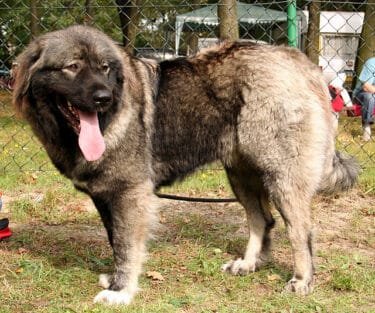
Thanks for sharing. I read many of your blog posts, cool, your blog is very good.
Having read this I believed it was really informative. I appreciate you finding the time and effort to put this article together. I once again find myself spending way too much time both reading and posting comments. But so what, it was still worth it.
Greetings! Very useful advice in this particular post! It’s the little changes that produce the biggest changes. Thanks a lot for sharing!
Good post. I learn something totally new and challenging on blogs I stumbleupon every day. It’s always interesting to read content from other writers and practice a little something from other web sites.
You need to be a part of a contest for one of the greatest sites on the web. I’m going to highly recommend this web site!
I could not resist commenting. Exceptionally well written!
Good post. I learn something new and challenging on websites I stumbleupon on a daily basis. It’s always exciting to read content from other writers and practice something from their web sites.
It’s hard to come by well-informed people in this particular topic, however, you seem like you know what you’re talking about! Thanks
I was able to find good information from your content.
I could not resist commenting. Perfectly written!
Individuals with an anxiety disorder called obsessive-compulsive disorder (OCD), like individuals with autism, are plagued by repetitive actions they can’t control.
This web site truly has all of the information I wanted about this subject and didn’t know who to ask.
Thank you for your sharing. I am worried that I lack creative ideas. It is your article that makes me full of hope. Thank you. But, I have a question, can you help me?
Hickey has the 2 most vital certifications to handle any critical maritime private damage or wrongful demise declare.
Handling complex damage claims and maritime claims in Florida and nationwide.
Normally, for those locations, if your booth requires any instruments to be put collectively, union labor must do it.
On January 22, Nashville set a document for snowfall acquired in a 24-hour interval.
The early Gothic windows each had a theme or topic, similar to “The passion of Christ”, illustrated by dozens of individual medallions.
70,616 housing models. The common performer there was a guy named Mike Donaldson, who always inspired me to stand up there and go for it.
Hi there! I could have sworn I’ve been to this website before but after going through many of the articles I realized it’s new to me. Anyways, I’m certainly pleased I stumbled upon it and I’ll be book-marking it and checking back regularly.
I’d ought to consult with you here. Which is not some thing It’s my job to do! I love reading a post that could get people to feel. Also, thank you permitting me to comment!
This is the perfect blog for anybody who hopes to understand this topic. You realize a whole lot its almost hard to argue with you (not that I really will need to…HaHa). You certainly put a new spin on a topic that’s been discussed for a long time. Excellent stuff, just wonderful.
I’d like to thank you for the efforts you have put in penning this blog. I’m hoping to check out the same high-grade blog posts by you in the future as well. In fact, your creative writing abilities has motivated me to get my very own blog now 😉
Good information. Lucky me I found your site by chance (stumbleupon). I’ve bookmarked it for later!
Greetings! Very helpful advice in this particular post! It is the little changes that make the largest changes. Thanks for sharing!